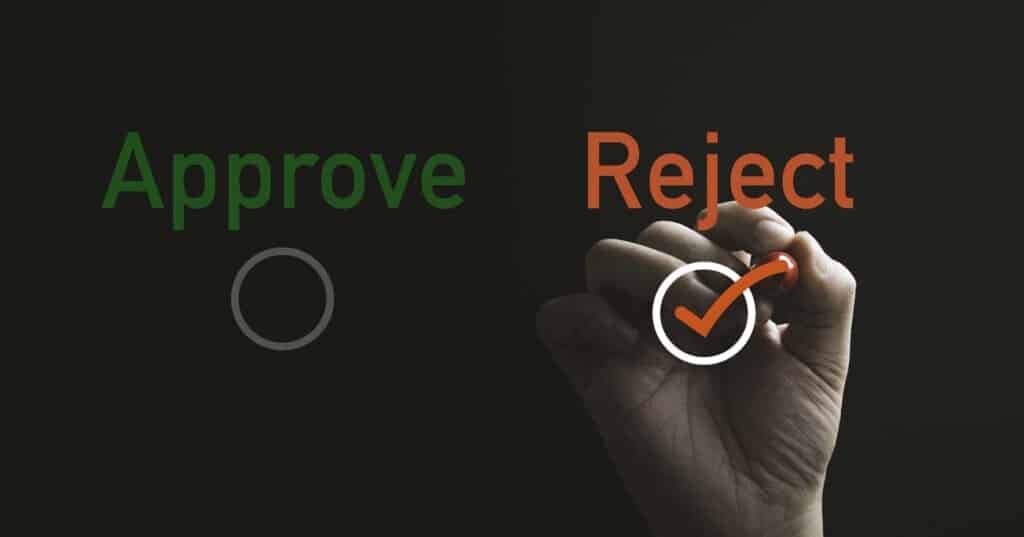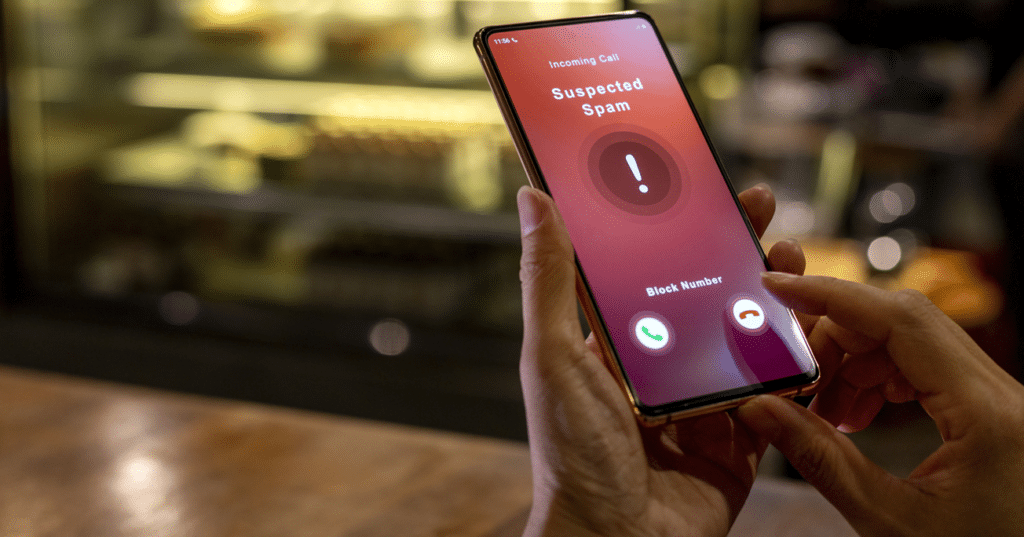
Why Apps Get Rejected
Table of Contents

TLDR – Why Apps Get Rejected
The article discusses why mobile apps are rejected from major app stores like Apple and Google. Key points include:
- Understanding App Store Guidelines: Apple and Google have strict guidelines for app developers. Apps failing to meet these requirements are often rejected. It’s crucial to understand the latest criteria used by these platforms.
- Common Mistakes to Avoid: The article lists common mistakes that can lead to app rejection, though it doesn’t specify them in this section.
- App Store Review Process: The review process involves an initial automated check for compliance and technical requirements, followed by a manual review for content, functionality, UI design, and user experience.
- Reasons for Rejection: Common reasons for app rejection include missing a privacy policy, no support URL, poor design, small or illegible text, poor navigation, and missing clear calls to action.
- Avoiding Rejection: To prevent rejection, it’s recommended to have a remarkable icon, include high-quality, informative screenshots, and write an engaging description. Apple, in particular, has high standards and looks for reasons to reject apps, so attention to detail is crucial.
Introduction
Navigating the intricacies of app store guidelines can sometimes feel like walking through a minefield. I’ve seen many promising apps face rejection, not because they lacked innovation or functionality but simply because they didn’t align with the meticulous guidelines laid out by the likes of the Apple App Store and Google Play Store. Understanding these guidelines is not just a box-ticking exercise; it’s fundamental to ensuring your app reaches its intended audience without unnecessary setbacks.

Apple App Store: A Tight Ship on Content and Functionality
In my experience, common reasons for app rejections in the Apple App Store often boil down to a few critical areas. This platform is quite stringent about content appropriateness. Anything that smells of sensitive or objectionable content, such as gambling or explicit material, is immediately shown the door. They also take a strong stance against copycat apps. It’s all about originality here. The intricacies don’t stop there – issues such as compatibility with Apple’s hardware and software, privacy policy inadequacies, or any hint of bugs and crashes during their review process can halt your app’s journey before it even begins.
Google Play Store: Focusing on User Safety and Unique Content
While sharing some similarities in their vetting process, the Google Play Store heavily emphasises the nature of the app. Here, content that endangers children or promotes violence and terrorism is a big no-no. Moreover, the Play Store casts a watchful eye on user-generated content. They expect you to be the gatekeeper, ensuring your platform isn’t used as a breeding ground for harassment or bullying. And let’s not forget the importance they place on metadata, intellectual property rights, unique functionality, and privacy and security policies.
• • •
Common Reasons for App Rejection in the Apple App Store

Inappropriate Content
In the world of the Apple App Store, content is king, but only if it adheres to the strict standards set by Apple. Any apps that feature or encourage sensitive or objectionable content, such as pornography, gambling, or behaviours that could be considered dangerous, are promptly rejected. Apple is dedicated to maintaining a safe, respectful environment for its users, as reflected in its stringent content policies. As an app developer, aligning your app’s content with these standards is crucial, ensuring it’s suitable for a wide-ranging audience and doesn’t cross any ethical or legal boundaries.
Copycat Apps
Apple does not take kindly to imitation. Apps that mirror the functionality or appearance of existing ones in the store face certain rejection. This policy protects the intellectual property rights of other developers and ensures the App Store remains a space for fresh, innovative ideas. If your app idea is similar to something already out there, it’s time to return to the drawing board and infuse it with unique features or an original twist.
Hardware and Software Compatibility
Apple’s ecosystem includes many devices and software versions; your app needs to play nicely with them. If an iPhone app doesn’t scale up effectively on an iPad or is incompatible with the latest iOS update, it won’t cut. As a developer, I create universal apps using adaptive layouts and high-resolution assets to ensure a seamless experience across all devices.
Lack of Privacy Policy
Regardless of whether your app collects personal data, Apple requires a privacy policy. This document must clearly articulate how the app collects, uses, and protects user data. It’s a non-negotiable element that speaks volumes about your commitment to user privacy and data security. Even a simple statement confirming that no personal data is collected goes a long way in meeting these requirements.
Sharing Personal User Data
In today’s digital age, how an app handles user data is under intense scrutiny. If your app collects personal information, it must adhere to Apple’s privacy rules, including transparent data tracking, storage, and sharing protocols. Developers must ensure that users have control over their data, including the ability to delete it upon request.
Using Private APIs
Apple’s private APIs are off-limits for a reason. They are undocumented and subject to change, and using them can lead to unpredictability in your app’s functionality. It’s a common pitfall for developers seeking to leverage advanced features, but it’s a surefire way to get your app rejected. Stick to public APIs officially documented by Apple to avoid this issue.
Bugs and Crashes During Review
If there’s one thing I’ve learned, it is that Apple’s review process is unforgiving of bugs and crashes. Your app will undergo rigorous testing, and any significant flaw will result in rejection. This is why I advocate for extensive testing on actual devices, not just emulators, to catch any potential issues before submission.
Unusually Long Load Times
In a world where every second counts, apps with prolonged loading times are a no-go. Slow load times can lead to user frustration and app abandonment. Developers should optimise app performance, use efficient server connections, and, if necessary, mask load times with engaging splash screens or useful content.
Broken Links
Broken links within an app signal neglect and degrade user experience. Whether it’s a link to a support page or external content, every hyperlink in your app must be functional and up-to-date. Regular checks and updates are essential to avoid this pitfall.
Placeholder Content
Placeholder content, like the ubiquitous “Lorem Ipsum” text, is a clear sign that an app is not ready for prime time. Before submission, it’s crucial to replace all placeholders with final content. A thorough pre-launch checklist can help catch these oversights.
App Appears Unfinished
Apple expects to see polished, fully functional apps. Anything that appears unfinished, including using words like ‘beta’ or ‘alpha’ or version numbers like ‘0.1’ in the app title or description, can result in rejection. Remember, the App Store is for finished products, not works in progress.
Incomplete or Inaccurate Metadata
Metadata must accurately reflect the app’s content and functionality, including app descriptions, screenshots, and age ratings. Misleading or incomplete metadata confuses users and violates App Store policies. Transparency and accuracy in metadata are key to gaining approval.
Low-Quality UI
Apple sets high standards for user interface design. Your app’s UI must be intuitive, aesthetically pleasing, and in line with Apple’s Human Interface Guidelines. Using Apple’s UIKit framework helps ensure consistency and elegance across different devices.
In Summary, navigating the App Store’s guidelines requires a careful, informed approach. By understanding and adhering to these standards, developers can enhance their chances of approval, ensuring their apps stand out for all the right reasons in this competitive marketplace.
Apple App Store Guidelines
The App Store Guidelines, provided by Apple, are a comprehensive set of rules and standards that developers must adhere to for their apps to be accepted and remain on the App Store. These guidelines cover many topics, including app functionality, privacy, security, content, and user interface design. They ensure that apps offer a high-quality, safe, and user-friendly experience. For an in-depth look at these guidelines, you can visit the official page here: https://developer.apple.com/app-store/review/guidelines/
• • •
Common Reasons for App Rejection in the Google Play Store

Nature of the App
Regarding app content, Google Play Store maintains a strict policy. Apps that contain or endorse inappropriate content such as child endangerment, acts of terrorism, or promotion of dangerous products face immediate rejection. As a developer, ensuring your app’s content doesn’t fall into these categories is paramount. The Play Store is committed to creating a safe and secure environment for its users, which extends to scrutinising the nature of the apps it hosts.
User-Generated Content Guidelines
In the realm of apps where users generate content, the responsibility of moderation lies heavily on the developer’s shoulders. Google Play Store rejects apps where user-generated content leads to harassment, bullying, or threats. Implementing a robust moderation system to filter out harmful content is crucial. The content within the app should foster a positive, user-friendly environment. Ensuring your app doesn’t become a platform for negative interactions is key to its acceptance in the Play Store.
Metadata Accuracy and Consistency
Metadata plays a crucial role in how your app is perceived and located in the Play Store. All information must be accurate and consistent, from the app description to the developer’s name, category, icons, and screenshots. Inaccurate or misleading metadata can confuse potential users and is a common reason for app rejection. Following a detailed, step-by-step process is essential to ensure your metadata accurately reflects your app’s purpose and functionality.
Violation of Intellectual Property
Google Play Store’s stance on intellectual property is unyielding. If an app infringes upon the intellectual property rights of another entity, it will be rejected. This includes violations of patents and trademarks. Proper documentation proving this affiliation is necessary if your app is associated with or sponsored by another entity. Misrepresentation or unauthorised use of another’s intellectual property will result in rejection and the app being banned from the store.
Lack of Unique Functionality and Content
Uniqueness is a cornerstone of app approval in the Google Play Store. Apps that lack originality in content or functionality are often rejected. This includes apps that are too similar to existing ones on the store or those that present repetitive content. Google values apps that bring something new to the table and offer value to users. Developers should create apps that stand out in their utility and content.
Privacy and Security Policy Compliance
The privacy and security of users are paramount in the Google Play Store. Apps that fail to adhere to stringent privacy and security guidelines are swiftly rejected. This includes apps that collect unnecessary user information, lack a clear and accessible privacy policy, or use insecure data encryption methods. It’s vital to ensure that your app respects user privacy, has a well-defined privacy policy, and uses secure methods to handle user data. Remember, an app that fails to protect its users’ privacy and security risks rejection and erodes user trust.
In summary, understanding the common reasons for app rejection in the Google Play Store is crucial for developers. This understanding helps align your app with the platform’s guidelines, focusing on creating a safe, unique, and user-friendly experience. By adhering to these guidelines, developers can significantly increase their chances of accepting their apps and succeeding in the competitive app marketplace.
Google Play Store Guidelines
The Google Play Store Guidelines are a detailed set of policies that Android app developers must follow to have their apps listed and maintained on the Google Play Store. These guidelines include app content, functionality, privacy, and security to ensure a safe and positive user experience. They are essential for maintaining the integrity and quality of the apps available on the platform. For a thorough understanding of these guidelines, you can explore them in detail on the official page here: https://play.google.com/about/developer-content-policy/
• • •
In Summary

In the intricate app development process, adhering to app store guidelines is not just a step – it’s a leap towards success. Both the Apple App Store and Google Play Store have their unique sets of rules. Still, common threads include the importance of original content, a stringent approach to user privacy and security, and a user-friendly experience.
As developers, we must embrace the challenge of thorough testing before submission, ensuring our apps are polished gems rather than rough diamonds. The emphasis should always be on originality – carving a niche in a crowded marketplace with innovative and secure applications that resonate with users. Remember, it’s not just about getting past the gatekeepers; it’s about creating something that stands out in a sea of sameness that users will love and trust. Let’s strive to meet and exceed these standards, crafting apps that aren’t just acceptable but exceptional.





